Symptoms of damage:
- Maggots feed on the pulp of the fruits
- Oozing of resinous fluid from fruits
- Distorted and malformed fruits
- Premature dropping of fruits and also unfit for consumption
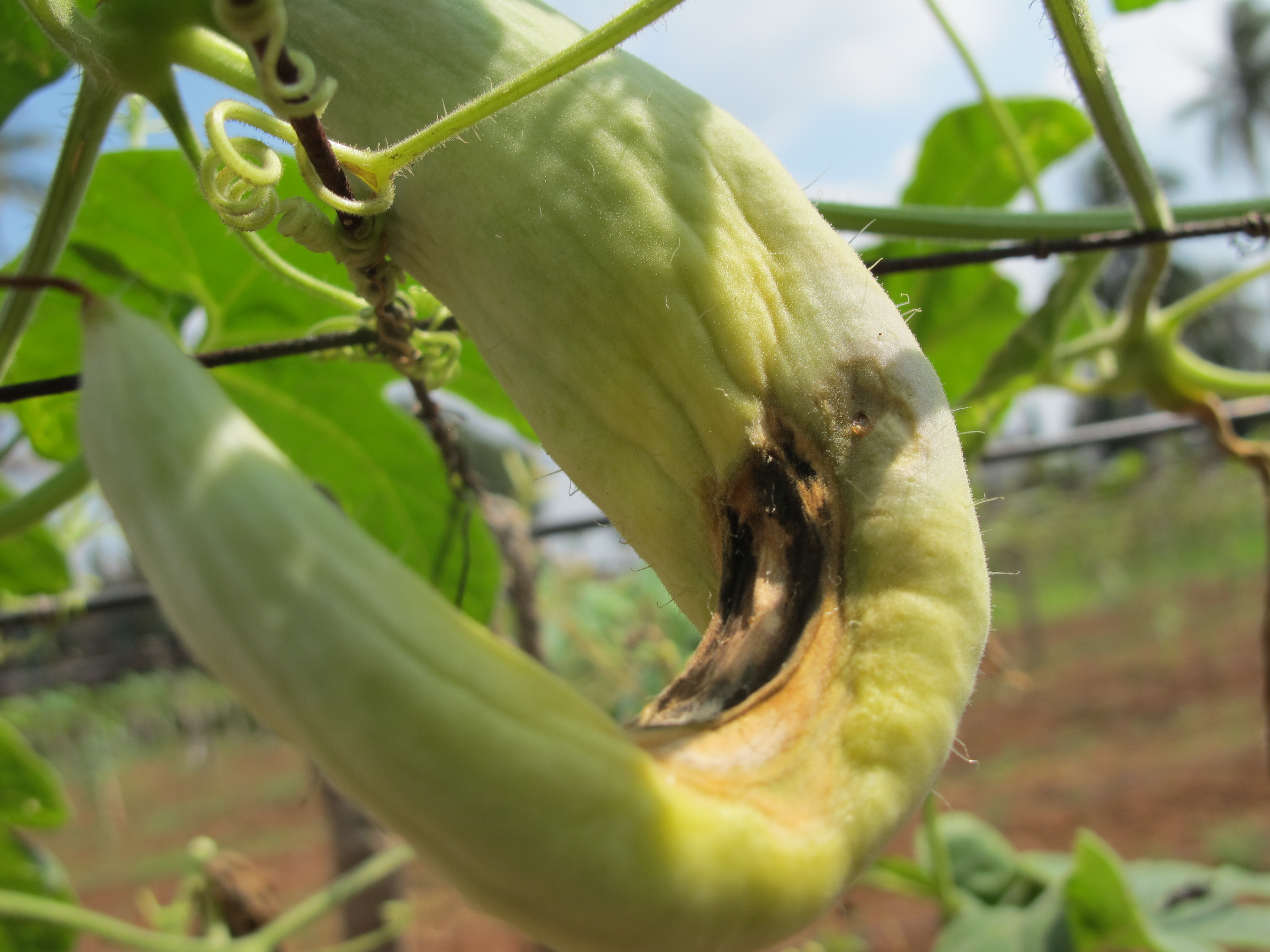 |
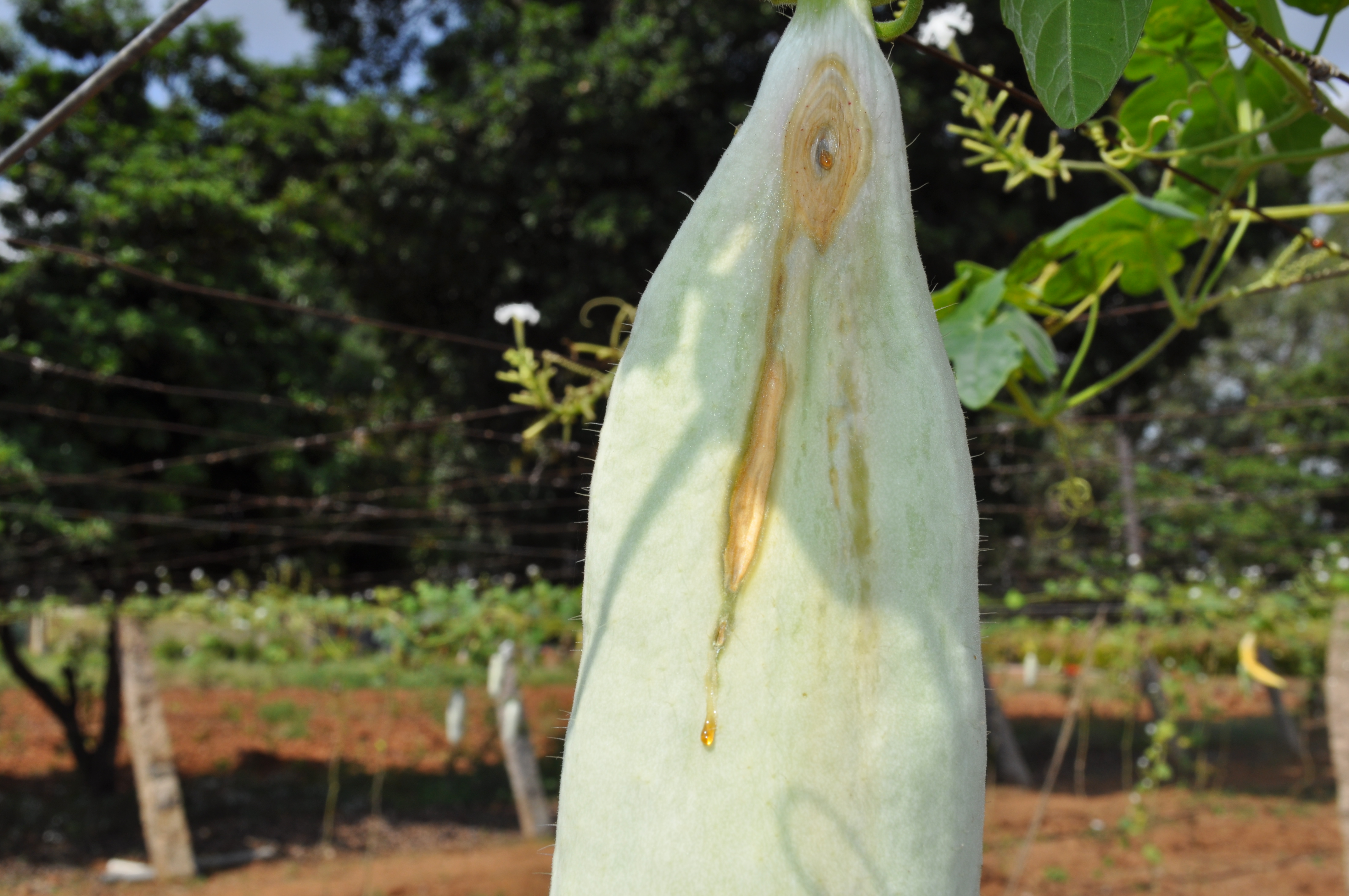 |
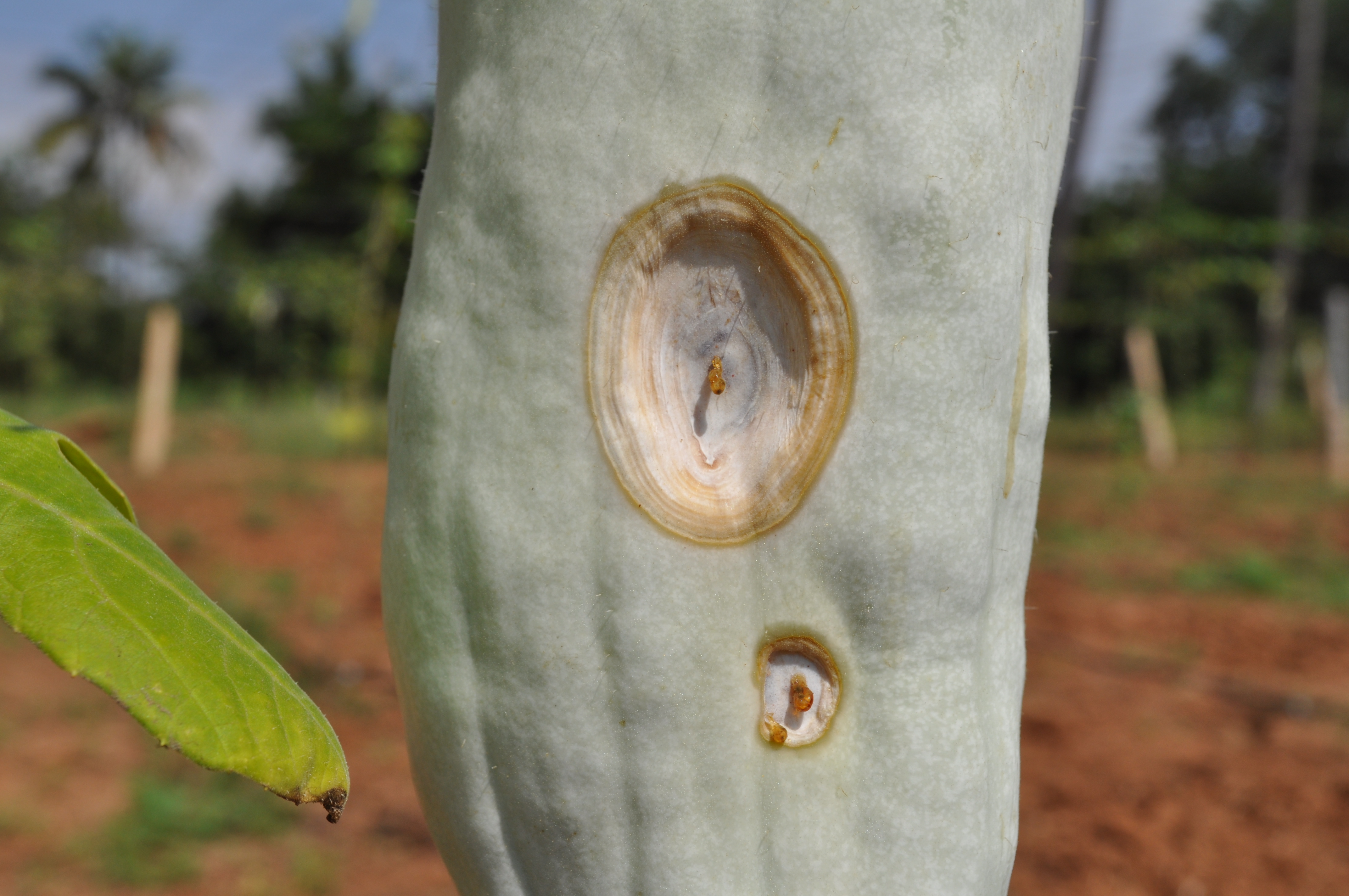 |
| Infected fruit |
Split on fruit |
Gumosis on fruit |
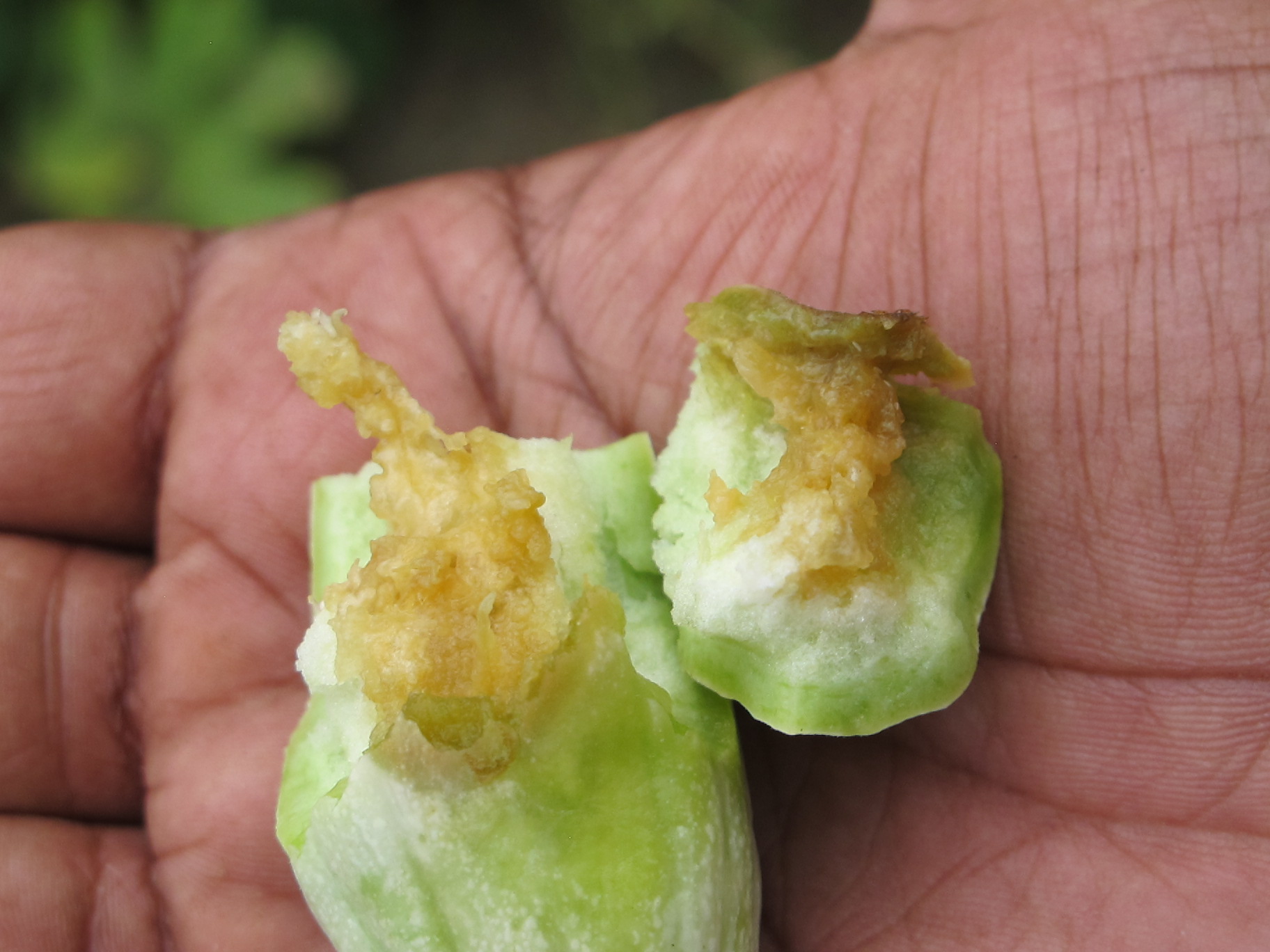 |
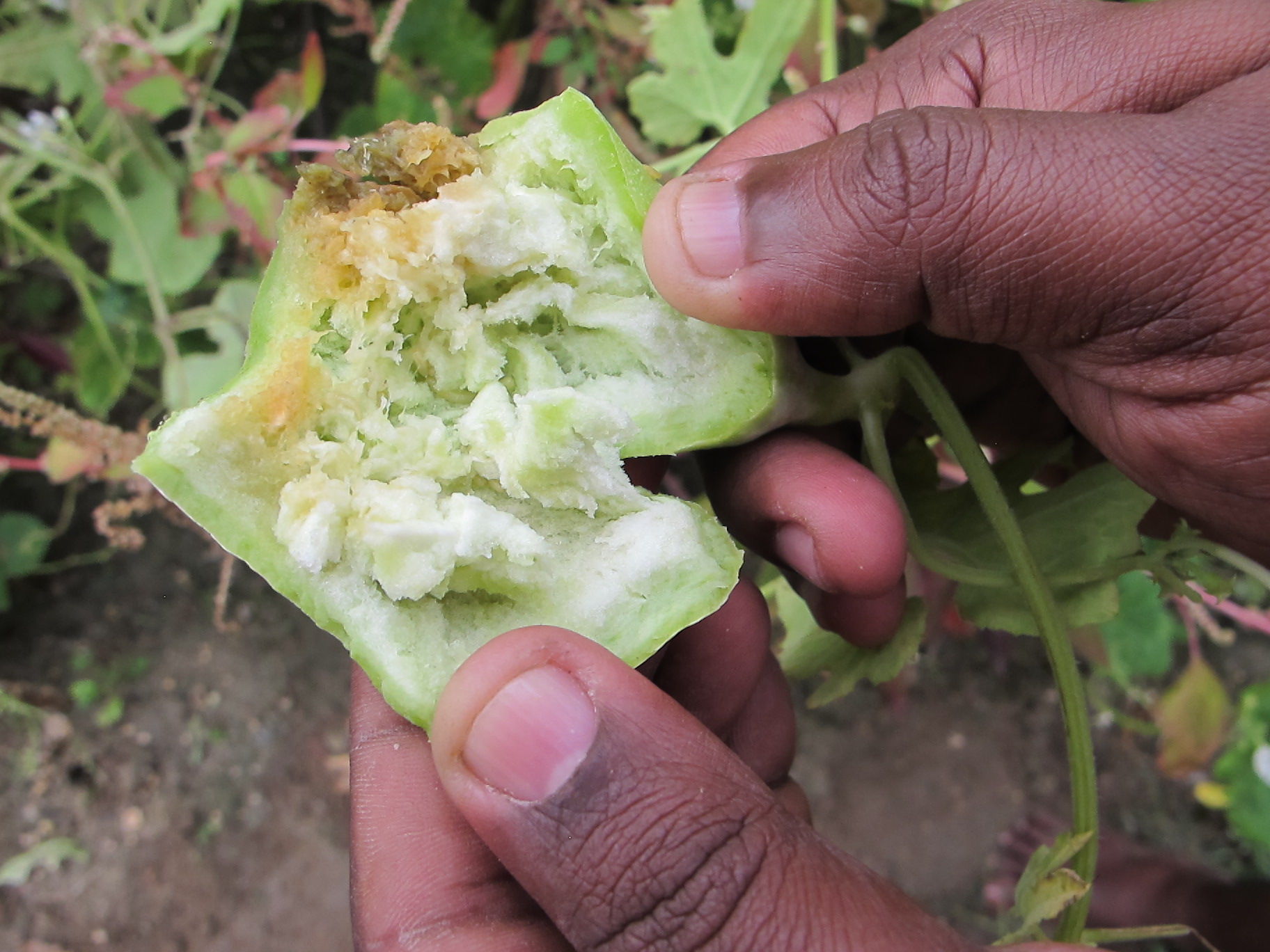 |
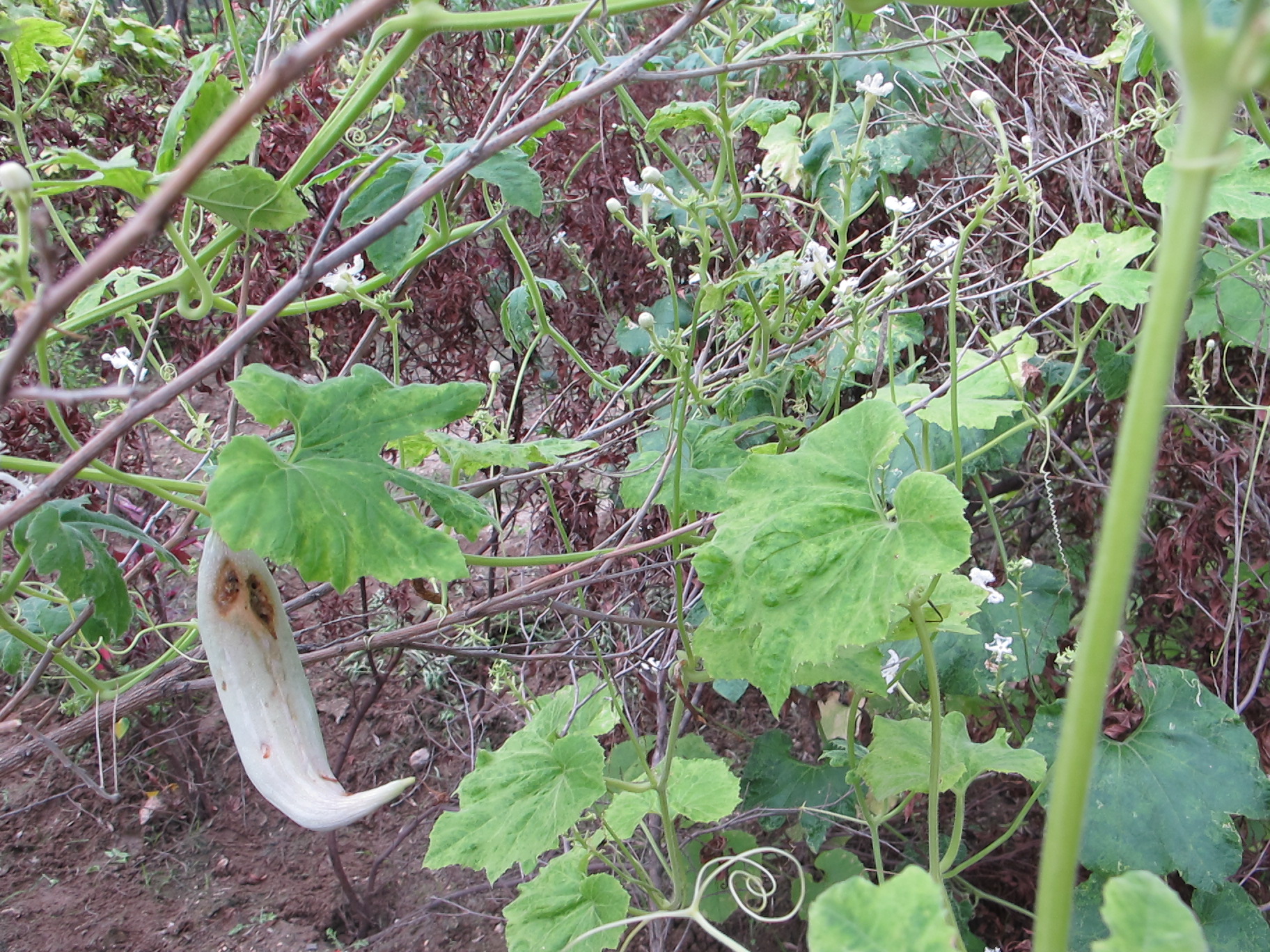 |
| Brownish internal tissue |
Stunted fruit |
Identification of pest:
- Eggs: Laid singly in clusters on fruits
- Larva: Dirty white apodous maggot
- Pupa: Pupate in soil
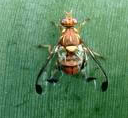 |
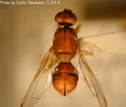 |
| Adult |
Bactrocera cucurbitae: Hyaline wings with brown and grey spots at the apex
Bactrocera ciliates: Ferruginous brown body. Smaller than Bactrocera cucurbitae
B. zonata: Body yellowish with pale yellow band on 3rd tergite
Management:
- Collect infested and fallen fruits and bum in deep pits.
- In endemic areas, change the sowing date as the fly population is low in hot dry conditions and at its peak during rainy season
- Expose the pupae by ploughing and turning over soil after harvest
- Use ribbed gourd as trap crop and apply carbaryl 0.15% or malathion 0.1% on congregating adult flies on the undersurface of leaves.
- Use attractants like citronella oil, eucalyptus oil, vinegar (acetic acid), and lactic acid to trap flies.
- Use poison baiting in severe infestation
- Mix methyl eugenol + malathion 50 EC at 1:1 ratio and keep 10 ml of the bait in polythene bags @ 25/ha.
- Use fly trap
- Keep 5 g of wet fishmeal in polythene bags (20 x 15cm) with six holes (3 mm dia)
- Add 0.1 ml of dichlorvos.
- Dichlorvos should be added every week and fishmeal renewed once in 20 days @ 5traps/ha.
|








